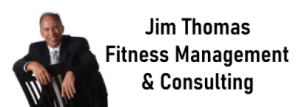Effective risk management is the backbone of every successful gym operation. For independent gym owners, boutique studio operators, and personal trainers, managing risk isn’t just about preventing accidents—it’s about protecting your members, your team, your reputation, and your livelihood. A single oversight can have devastating consequences: financial losses, legal action, or even permanent closure.
This guide provides a deep dive into the essential components of a comprehensive risk management strategy—covering physical, operational, legal, financial, and reputational risks—and outlines the steps you must take to ensure safety and compliance across every level of your gym business.
1. Understanding the Types of Risks
Independent gym owners face multiple categories of risk that must be addressed proactively:
Physical Risks
These include injuries from equipment misuse, improper supervision, slips, falls, and overexertion. Even with top-tier equipment, one unsafe environment can lead to major injury claims.
Operational Risks
Operational risks arise from breakdowns in systems or processes—equipment failure, inadequate staff training, poor maintenance, or neglecting cleaning and safety protocols.
Legal Risks
These stem from negligence, regulatory violations, or poorly written waivers. Non-compliance with state or federal safety standards can expose you to lawsuits and fines.
Financial Risks
These involve losses from theft, property damage, or sudden, unplanned expenses. A single insurance gap or equipment malfunction can cause thousands in losses.
Reputational Risks
Your brand’s reputation can take years to build and moments to destroy. Negative publicity, poor online reviews, or social media exposure of safety incidents can deter prospects and erode trust among existing members.
2. Controlling Risks
Developing and implementing a structured risk management plan helps you anticipate, evaluate, and control potential threats.
Risk Identification
Conduct regular facility walkthroughs and equipment inspections. Encourage staff to report hazards immediately. Consider hiring a third-party safety consultant for annual audits.
Risk Evaluation
Assess the likelihood and impact of each identified risk. A minor hazard may need simple procedural correction, while a high-impact risk (like faulty electrical wiring) requires immediate professional intervention.
Risk Mitigation
Develop procedures to minimize risk exposure—routine maintenance schedules, proper signage, clear emergency plans, and ongoing staff training. Preventive measures save far more than corrective ones.
Monitoring and Review
Risk management isn’t “set it and forget it.” Continuously evaluate the effectiveness of your safety systems and adjust policies as needed to align with changing laws, equipment, and operations.
Example:
A gym that performs weekly equipment inspections and quarterly staff safety drills significantly reduces both accident frequency and insurance claims.
3. Adherence to Fitness Standards
Following established fitness and safety standards ensures member protection and regulatory compliance:
Facility Standards
Keep the gym clean, well-lit, and ventilated. Floors should be slip-resistant, emergency exits unobstructed, and pathways clear.
Equipment Standards
Only use equipment that meets recognized safety certifications (ASTM, ISO, UL). Maintain and document regular inspections and servicing by qualified technicians.
Staff Qualifications
Require all trainers and front-line employees to maintain relevant certifications (CPR, AED, First Aid, personal training credentials). Ongoing education ensures both safety and professionalism.
Tip:
Post your compliance certificates and safety protocols where members can see them—it builds trust and reinforces your credibility.
4. Importance of Warnings
Proper warnings can prevent injuries before they occur.
Signage
Use clear, easy-to-read signs explaining equipment use, emergency exits, and potential hazards (e.g., “Caution: Wet Floor” or “Ask for Assistance Before Using Free Weights”).
Verbal Warnings
Empower staff to speak up immediately when unsafe practices are observed—like improper spotting, equipment misuse, or unsupervised minors.
Educational Materials
Provide videos, posters, or QR-code links to resources that demonstrate proper lifting form, warm-up techniques, and gym etiquette.
Proactive communication through signage and supervision not only prevents accidents but shows members you take their well-being seriously.
5. Waivers and Releases of Liability
Waivers protect your gym, but only if they are properly drafted and executed.
Drafting Waivers
Work with legal counsel to develop waivers that clearly explain inherent risks in physical activity, outline limitations of liability, and specify the member’s acknowledgment of these risks.
Legal Compliance
Waiver enforceability varies by state. Regularly review documents to ensure they align with current laws and case precedents.
Separate Documents
Keep waivers separate from membership agreements for clarity. Combining them can weaken enforceability.
Remember: waivers protect against ordinary negligence but not gross negligence or intentional misconduct. Always prioritize safety and proper staff training.
6. Record-Keeping
Detailed documentation is your first line of defense if an incident occurs.
Incident Reports
Record every accident or near miss with time, location, witness statements, and immediate actions taken. Prompt reporting shows diligence.
Maintenance Logs
Document equipment inspections, repairs, and service dates. These records can prove compliance and due care in the event of litigation.
Training Records
Maintain up-to-date documentation of staff certifications, continuing education, and safety meetings.
Membership Agreements and Waivers
Store all signed documents securely—digitally and physically—for quick retrieval. Ensure access is limited to authorized personnel.
Proper record-keeping supports both safety and legal defense efforts while helping identify recurring issues.
7. Working with Outside Groups
Gyms frequently collaborate with personal trainers, corporate wellness groups, or rental clients. These arrangements introduce additional risks.
Contracts
Use detailed written agreements specifying responsibilities, facility use terms, and liability coverage. Require all third parties to agree to your safety policies.
Insurance Verification
Obtain proof of insurance from all outside trainers or groups, including certificates naming your gym as an additional insured.
Policy Alignment
Ensure external trainers follow your gym’s safety standards, emergency protocols, and incident reporting procedures.
By holding outside parties accountable, you maintain consistent safety standards across all activities on your premises.
Conclusion: Building a Culture of Safety and Compliance
Comprehensive risk management isn’t a one-time project—it’s an ongoing commitment. By identifying and controlling risks, adhering to industry standards, maintaining strong documentation, and properly managing collaborations, independent gym owners can safeguard their businesses from legal and financial setbacks.
More importantly, a robust risk management strategy enhances your brand’s integrity, strengthens member confidence, and demonstrates professionalism that distinguishes you from competitors.
Remember: A safe gym is a profitable gym.
Every preventive measure you implement today protects your members, your team, and your future success tomorrow.
Need help building systems, improving your facility, or turning around your gym business? Contact Jim here.

AI Powered Gym Management. The dream of many gym owners is freedom—the ability to run a profitable, thriving business without being chained to the front desk 12 hours a day. Creating freedom in the gym business means you’ve built systems, structures, and technology that allow your business to operate smoothly—whether you’re on the gym floor, on vacation, or managing remotely from across the world. By embracing the power of AI, you can manage your gym remotely, maintain full control, and reclaim the lifestyle you envisioned when you first became an entrepreneur. Check out this video: or call 214-629-7223 | jthomas@fmconsulting.net
Looking for Financing Options?
Take your gym business to the next level. Click here to explore tailored financing solutions, or contact us directly at 214-629-7223 or via email at jthomas@fmconsulting.net. Prefer to dive right in? mconsulting.net/Apply now or book an appointment for a personalized consultation.
Are you ready to sell your gym? Have a specific Gym Sales & Acquisitions question? Message me here and let’s chat! Or call/text at 214-629-7223.
The Best Gym Billing Software. Choosing the Right Gym Software Company: Key Elements for Independent Gym Owners and Entrepreneurs. Click here for more information.
Insurance Made Simple for Gym Owners & Personal Trainers
Protect your business and your future. Discover custom insurance solutions here.
Custom Apparel Without the Hassle
Get premium custom apparel for your gym with no inventory required. Click here to get started.
Is Your Gym in Need of a Boost?
Whether you’re facing declining sales, need a fresh marketing strategy, require a complete business turnaround or ready to start a new gym, we’re here to help. With over 25 years of industry expertise, we offer a free initial consultation to explore solutions tailored to your unique challenges. Don’t wait—contact Jim Thomas at 214-629-7223, or gain immediate insights from our YouTube channel. Connect with us on LinkedIn. EMAIL NEWSLETTER. Join for FREE.
Meet Jim Thomas
Jim Thomas is the Founder and President of Fitness Management USA, Inc., a premier management consulting, turnaround, financing, and brokerage firm specializing in the leisure services industry. With over 25 years of hands-on experience owning, operating, and managing fitness facilities of all sizes, Jim is an outsourced CEO, turnaround expert, and author who delivers actionable strategies that drive results. Whether it’s improving gym sales, fostering teamwork, or refining marketing approaches, Jim has the expertise to help your business thrive. Learn more by visiting his website or YouTube channel






